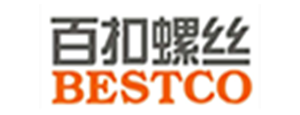
As we navigate through an increasingly interconnected global market, one cannot overlook the pivotal role that industrial products trade shows play in shaping industry dynamics. What makes these events so essential for businesses and stakeholders alike? Let’s delve deeper into their unique market attributes.
Understanding the Essence of Industrial Products Trade Shows
Industrial products trade shows serve as vital platforms where manufacturers, suppliers, and buyers converge to showcase innovations and forge strategic partnerships. These events are characterized by a diverse array of exhibitors representing various sectors within the industrial landscape. A key feature is their ability to facilitate Geolocation-based Segmentation; this allows companies to tailor their marketing strategies based on geographic data, ensuring they reach relevant audiences effectively. By leveraging location insights, participants can optimize product offerings and enhance customer engagement across different regions.
Diving Deeper: Machinery Expo’s Role in Geolocation-Based Segmentation
The machinery expo exemplifies how Geolocation-based Segmentation can be effectively utilized within industrial products trade shows. Exhibitors at these expos often analyze regional demand trends to determine which machines or technologies resonate most with local markets. For instance, a company showcasing agricultural machinery may focus its efforts on rural areas known for farming activities while targeting urban centers with advanced manufacturing solutions. This targeted approach not only maximizes visibility but also increases conversion rates by aligning product features with specific regional needs.
An Insightful Look at ITES in Geolocation-Based Segmentation

The Information Technology Enabled Services (ITES) sector further illustrates the significance of Geolocation-based Segmentation during industrial products trade shows. Companies operating within ITES leverage geospatial analytics to identify potential clients based on demographic factors such as population density and economic activity levels in certain locales. By understanding where demand exists geographically, ITES providers can customize their service offerings—be it software solutions or technical support—to better cater to localized requirements, thereby enhancing overall client satisfaction.
Conclusion: The Strategic Importance of Geolocation-Based Segmentation in Industrial Products Trade Shows
In summary, industrial products trade shows are not merely exhibitions; they are strategic arenas where businesses harness the power of Geolocation-based Segmentation to drive growth and innovation. By understanding regional characteristics and tailoring approaches accordingly, companies can significantly improve their outreach efforts while fostering meaningful connections within target markets.
